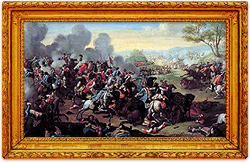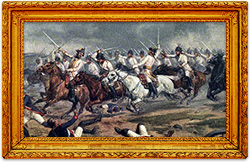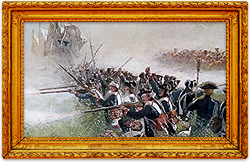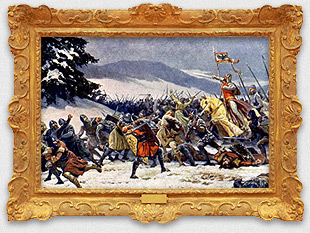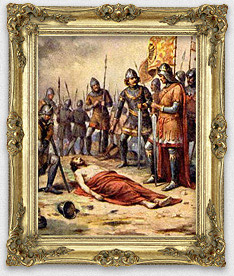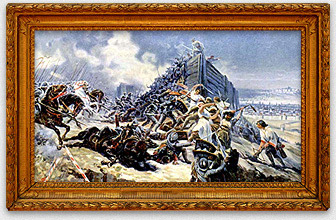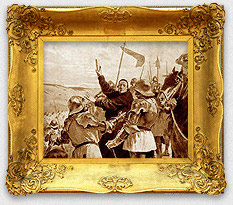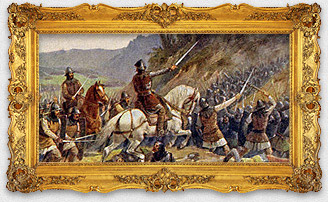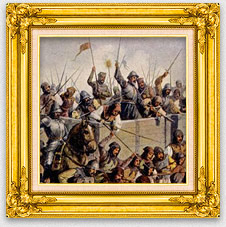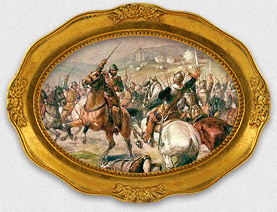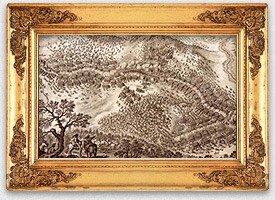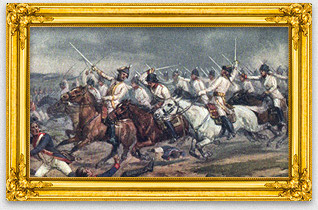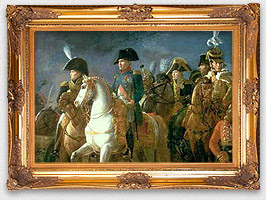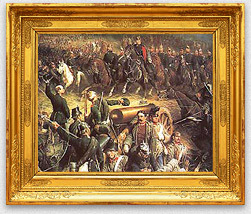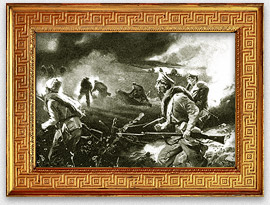Historical Context
The Battle of Kolín is one of the most important clashes of the Seven Years’ War which significantly influenced the history of the Bohemian Lands. Nowadays, however, it does not have enough attention. This battle was not the decisive moment definitely affecting the result of the war, but it did affect its development in an important way. It took place at the beginning of the war which then was to last for next six years.
On the other hand, it entailed that the Bohemian Lands remained as a part of Habsburg Monarchy, without Silesia though, which after the war was definitely acknowledged as a part of Prussia. Silesia should then bear a different fate than the other Bohemian Lands.
In mid-18th century Europe witnessed till that point the most important changes of its political map. The old coalitions of the states which had existed for generations broke up. On the contrary, the lands which had been against each other for a lot of decades or centuries formed alliances. This signalled a near big war which was to take part not only within the area of Europe but also in Northern America and India, or else also some small fights in places to which the power of the fighting countries could reach. Not for nothing did e.g. Winston Churchill called the Seven Years’ War as the “first world war”.
The first impulse for the war was at the beginning the Austrian province – a part of the Bohemian Lands – Silesia. The name of the person who is the most responsible for starting the war has also a lot to do with the Bohemian Lands, as it was the chancellor Wenzel Anton, Prince of Kaunitz, the member of Moravian aristocracy with his seat in today’s Slavkov u Brna (Austerlitz) and a Maria Theresa’s prominent diplomat. It can definitely be said that he was one of the most important personalities influencing the political events of his time.
After alliance between Britain (until that time the ally of the Habsburg Monarchy) and Prussia, the empress sent Kaunitz to France in order to negotiate there a new alliance with a long-time enemy aimed against Prussia. This was then joined also by Russia. Both of these powers pursued their own aims, France wanted, among others, to military defeat Britain with which they could not compete economically, Russia intended to fight the growing power of Prussia and with that to strengthen their positions in the West. A strong anti-Prussian alliance arose on the continent.
Each of the in the alliance involved lands had more inhabitants than Prussia and their armies were considerably large. On the other hand, the Prussian army was considered to be the most disciplined and the most competent in whole Europe. When it was joined by an excellent commander as was the Prussian King Frederick II (the Great) his army seemed to be unbeatable. However, the superiority of the allied army was huge.
The alliance between Britain and Prussia guaranteed the most powerful naval power the help of the strongest ground forces and vice versa. There was a range of advantages especially for Britain in it, as they could fully concentrate on the war overseas and weakening the French Navy while their back was covered from the continent against a potential landing thanks to occupying considerable forces of the enemy by the Prussian army. Prussia, on the contrary, was receiving from Britain enormous sums of money for the war.
Preceding Events
The beginning of the disputes between Austria and Prussia can be already found at the turn of the 17th and 18th centuries when the newly arisen Prussian Kingdom was getting stronger and gradually was gaining bigger and bigger influence on the Northern borders with the Habsburg Monarchy. In the 1740s the Prussian army represented such power to which the Austrian army was not able to respond.
At the beginning of her reign the Empress Maria Theresa found this out, when in so called War of the Austrian Succession her army lost control over a lot of areas of the empire. The territorial integrity of the whole monarchy was in that time endangered. However, it was defended in two so called Silesian Wars at the cost of losing Silesia to the benefit of Prussia. The empress was not willing to accept this and winning Silesia back and defeating Prussia became one of her priorities within her foreign policy.
The relations between both lands were extremely tense, they were full of mistrust and suspicion and further war preparations were taking place. Austria, meanwhile, succeeded in complete army reorganisation and they consolidated the internal situation, so in the 1750s they were an equal enemy for Prussia when it came to military aspects. The Austrian preparations for further war for Silesia were interrupted by the Prussian king with the attack which was supposed to defeat the enemy before some other lands come to help.
Prussia successfully attacked the Austrian ally Silesia so that they would prevent Saxon and Austrian forces from their forming the alliance. In the Battle of Lovosice (1st October 1756) the Austrian troops trying to free the besieged Saxon army were defeated. Further campaign continued first in the spring of the following year. At that time Frederick II attacked Bohemia and soon he defeated, though it was with huge losses, the Austrian army at Štěrboholy (6th May 1757) and besieged its major part in Prague.
Since that moment Prague had to face a destructive siege and Prussian forces were taking over the major part of Bohemia. Once again the territorial integrity of the monarchy, especially the potential capitulation of Prague and the army hiding there could have had huge consequences for the further course of the war, but also for the post-war period. This was the reason why the till that point timid court military council in Vienna decided to liberate Prague at any cost. In order to do so as the commander-in-chief of the newly formed army at Čáslav (German: Tschaslau) was chosen marshal Daun who was not a very decisive person, but still he was less hesitant than many of other Austrian commanders.
Yet, we have to be aware of the fact that in many previous battles which took place in the first, second and at that time also the third Silesian War the Austrian army was not able to defeat the Prussian one even once. The worries on the side of the Imperial army’s commanders were huge and legitimate. Moreover, the potential Daun’s defeat would have meant not only the fall of Prague, but also an open way straight to Vienna. On the other hand, the Austrian army had made an enormous progress since the 1740s and the first two Silesian Wars and in the Battles of Lovosice as well as of Štěrboholy was an equal enemy for Prussians and nearly managed to defeat them.
That marshal Daun, who was aware of the fact that he was commanding the last fit to fight army of the monarchy, was going forward towards Prague very carefully. Frederick II had no idea about the enemy’s plans and therefore he set off with a part of his troops towards the East in order to force out the Austrian army from the rest of Bohemia by which he wanted to secure supplying (plundering) for his army from the local sources. Not far from Kolín both armies met. Prussians had about 19,000 foot soldiers and 14,000 cavaliers and 90 cannons, altogether about 34,000 soldiers. The Austrian army was stronger, about 34,000 foot soldiers, 17,700 cavaliers and 154 cannons, altogether 52,750 soldiers. Prussians had to leave a significant part of their excellent foot soldiers besieging Prague, which was crucial for the forthcoming battle.
Course of the Battle of Kolín
The Imperial army took a position on the bank of the river Bečvárka and waited for the battle, but one night before the battle they managed to move to a better position, because Daun estimated correctly that Frederick II is trying to besiege them from the North. That is why the whole Austrian array turned to the North and a larger part of its troops took over the bank on the South from the road between Český Brod (Böhmish Brod) and Kolín (Kolin). Meanwhile, Prussians marched along the road, by which they tried to go around the Imperial forces.
In that time, however, they had no idea what the size of the enemy’s army was. They managed to push out the light cavalry and foot troops from the surroundings of the settlement Zlaté Slunce and to get through to the village of Křečhoř. The Imperial hussars were not able to hold the Prussian riders and they were pushed back to the space between Křečhoř and Radovesnice, by which they created further space for Prussians trying to besiege the Austrian right wing. Yet Daun’s reaction to the enemy’s attempts came in time and he send all the reserves standing on the left wing to the East to Křečhoř. This was the place where the battle was to be decided, and both commanders were fully aware of that.
Nevertheless, Prussians were on the battlefield at Kolín in a huge disadvantage. Firstly, they were attacking a climbing hill where there was appropriately positioned Austrian artillery and the enemy on some tracts exceeded the Prussians units. The first attacks around 2.00 PM brought pushing out the Imperial foot army from the village of Křečhoř, but further advancement of Prussians started to complicate. A strategically important place was in that time a small oak forest to the South of Křečhoř, which was to play a significant role in the battle. Prussians did at the beginning succeed in taking it over (around 4.00 PM) but soon they were pushed out by the counterattack of the Austrian foot troop. From there they then led the shooting which from the side disrupted the attacks of the Prussian troops and moreover some of the Austrian troops, destroyed during the fighting, were forming again behind this natural barrier.
The intended breakthrough on the right wing of the Imperial army was not successful at its beginning for Frederick. His leaders of the troops therefore, themselves seized the initiative and ordered a frontal attack against all Austrian positions. They attacked both the Hill of Přerov and Hill of Křečhoř, but as it turned out later, this was without any success. The Prussian king could not stop this misunderstanding and therefore, he at least tried to support the attacks of the whole army with some reserves.
The whole Prussian army, however, was unbearable stretched which was giving advantage to the larger Imperial army. The Prussian attacks were following one another and in the same way they were fought off until the time when two Prussians foot divisions which were supported by a strong cavalry were joined, which could signify the victory of Frederick II.
Yet, after 5.00 PM the Austrian cavalry succeeded in defeating a part of the enemy’s cavalry in the space of the Hill of Křečhoř and the following attacks of the cavalry scattered the Prussian foot troop. This was the end of the Battle of Kolín, and it does not make any difference that Prussians kept trying for some time to take over the Hill of Přerov with a few attacks. Their lead was for some time taken over by Frederick himself so that his example would change the whole situation. There is a known quotation of his coming aide-de-camp, “Sir, are you going to attack the battery by yourself?” which he said after the withdrawing soldiers did not join Frederick. He, at least, vented his feelings in front of the soldiers when he said "You dogs, do you want to live for ever?"
Result
Around 7:30 PM it was quite clear that the Prussian king has just experienced his first important defeat in the Battle of Kolín. The bleeding foot troops were not able to resist the Austrian counterattacks which were coming for the Hill of Přerov into the side of the Prussian forces and also from the Hill of Křečhoř towards the village of Křečhoř. Prussians were quickly leaving the battlefield, but the marshal Daun did not dare to follow them. He was aware of the fact that the enemy was defeated and that the liberation of the army in Prague is only a matter of time. He did not, therefore, want to risk possible losses, especially when the night was coming and his army was rather tired.
Several days after the battle they continued to Prague and liberated the city. The Prussian king had to gradually leave Bohemia and withdraw back. The idea to destroy the whole Austrian army and to start a campaign against Vienna perished, as well as the possibility of Bohemian Lands joining Prussia. In the following year Frederick II tried to launch a new offensive, this time in Moravia. He did besiege the city of Olomouc, but after his supplying troops were defeated at Domašov he was forced to withdraw to Silesia. Bohemia and Moravia were for the rest of the war spared the further horrors of the war, and the fighting continued only on the Prussian area.
Historical Importance
The Seven Years’ War went through a lot of turns, the biggest one being the Russian one-sided truce which left the Austrian allies alone in the fight against Prussia. This meant that Austria lost its last chance to win back Silesia, which they occupied for several war years.
The Seven Years’ War ended in 1763 with the signature of the peace treaties in Paris and Hubertsburg. The status quo ante bellum, which means the unchangeable pre-war borders, was guaranteed there. Austria definitely lost its larger part of Silesia and it did not prevent Prussia from joining the European powers. However on the other hand, it did not suffer any direct losses concerning its area or power. On the contrary, the price the Austrian ally France had to pay was higher. Especially the loss of most colonies was for the economy as well as the pride of the land huge.
The results of the Seven Years’ War are also considered to be one of the causes of the French Revolution. Prussia, on the contrary, took the direction of pushing out the Habsburgs from the Holy Roman Empire. Britain achieved the biggest benefits concerning the new areas, as they gained a whole number of French colonies, the largest ones in America. Gaining so called New France stretching mainly along the Saint Lawrence River and the Great Lakes brought big problems for Britain.
Thanks to the war the original thirteen British colonies reorganised themselves and their military readiness got better and the until that time threats from France, which was the reason why they needed the protection from their home land, disappeared. This soon resulted in the American War of Independence, secession of the colonies and declaration of the independent United States of America.
Author: Mgr. et Mgr. Jan Rája



